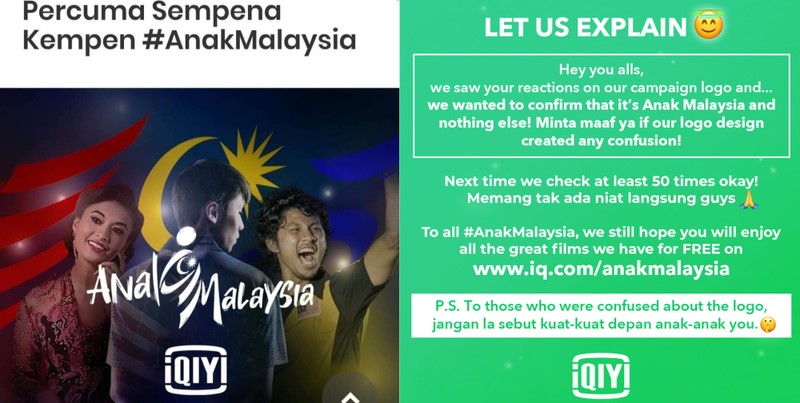Advertising is a powerful tool for shaping public perception and driving sales, but when done poorly, it can backfire and cause lasting damage to a brand’s reputation. A bad advertisement wastes resources, alienates potential customers, and invites public criticism. In Malaysia and globally, the digital age has made it easier than ever for bad ads to go viral for all the wrong reasons.
From culturally insensitive campaigns to misleading claims, these advertising pitfalls are avoidable and opportunities for brands to learn and grow. This article highlights eight types of bad advertisements that brands in Malaysia and worldwide should steer clear of in 2025. We’ll explore real-life examples and provide actionable tips to help you craft campaigns that resonate positively with your audience.
Table of Contents
1. Pepsi’s Kendall Jenner Ad (Global Example)

In 2017, Pepsi released an ad featuring Kendall Jenner leaving a photoshoot to join a generic protest march. The climax depicted her handing a can of Pepsi to a police officer, seemingly resolving the tension. The ad faced widespread backlash for trivialising social justice movements and using them as a backdrop for marketing. Many criticised the brand for being tone-deaf and disrespecting the gravity of real-world protests.
How to Avoid It:
- Avoid exploiting sensitive issues for commercial gain unless your brand genuinely connects to the cause.
- Collaborate with consultants or activists familiar with the topic to ensure your approach is respectful and meaningful.
- Conduct focus group testing with diverse audiences to identify potential pitfalls before launching the campaign.
2. Cadbury Malaysia’s “Salute the Goodness” Campaign Misstep
Cadbury Malaysia faced backlash after releasing a “Salute the Goodness” video on Instagram, which was criticised for not promoting racial diversity. The ad, meant to celebrate Malaysian unity, was accused of sidelining the Malaysian Indian community due to a lack of representation in the shortened version shared on social media.

Cadbury responded by clarifying that the entire YouTube advertisement featured all Malaysian races but was trimmed for Instagram and Facebook due to space constraints. The incident highlighted the importance of ensuring messages of inclusivity are clear and consistent across all platforms.
How to Avoid It:
- Prioritise Consistency Across Platforms: Ensure shortened versions of ads maintain the core message and representation seen in the full version.
- Conduct Platform-Specific Reviews: Tailor content for each platform but verify that edits do not compromise the overall narrative or inclusivity.
- Engage Diverse Review Panels: Before launching campaigns, seek feedback from representatives of all community groups to avoid accidental omissions.
- Proactively Communicate Changes: If edits are necessary, inform audiences about the rationale to prevent misunderstandings.
This situation reinforces the need for thorough planning and sensitivity when crafting advertisements, particularly in a multicultural society like Malaysia. Striving for inclusivity in every detail is essential to avoid alienating any community.
3. iQIYI Malaysia’s #AnakMalaysia Logo Controversy

iQIYI Malaysia found itself in hot water after the launch of its #AnakMalaysia (Child of Malaysia) campaign. The confusion stemmed from the logo’s design, where several netizens mistook the logo for “Anal Malaysia” instead of “Anak Malaysia.” The issue arose from placing the letter “K” in the design, leading to viewers’ misunderstandings.

As a result, the poster quickly became a subject of ridicule, circulating widely on social media. Despite the controversy, iQIYI removed the promotional poster and issued a public apology, clarifying that the logo was meant to read “Anak Malaysia.”
How to Avoid It:
- Test Designs Thoroughly: Before launching any logo or design, conduct internal and external reviews to catch potential issues with fonts, letters, and overall readability.
- Seek Feedback from Target Audiences: Test logos and promotional materials with a small group of the target audience to spot potential misinterpretations or confusion.
- Use Clear, Simple Design: Simplicity often prevents mistakes. Avoid overly complex or stylised fonts that can lead to confusion or misreading.
This incident reminds brands to be extra cautious with design elements that can be easily misinterpreted, especially when launching national or culturally significant campaigns.
4. Dove Body Wash ‘Whitewashing’ Ad (Global Example)

Dove faced a PR crisis after releasing an ad where a black woman removed her shirt to reveal a white woman underneath, followed by another woman of a different ethnicity. The ad was slammed for perpetuating harmful racial stereotypes, as it appeared to associate whiteness with cleanliness.
How to Avoid It:
- Conduct sensitivity training for creative teams to prevent unintentional bias in campaign concepts.
- Test advertisements across diverse focus groups to ensure the message aligns with inclusivity and avoids stereotypes.
- Emphasise diverse representation in your campaigns without relying on gimmicks or controversial visuals.
5. Sexualised Ads by Local Brands

A local brand promoting collagen juice sparked outrage with an advertisement that many deemed overly sexualised and inappropriate. The ad featured sexual phrases alongside visuals of a man with an undressing stare directed uncomfortably at a woman in his arms. The suggestive language and imagery not only made viewers uncomfortable but also led to widespread criticism for objectifying women and pushing unrealistic beauty standards in a culturally conservative society.
How to Avoid It:
- Be Culturally Aware: Understand the societal norms and sensitivities of the target audience to avoid content that might be deemed offensive or inappropriate.
- Use Empowering Messaging: Focus on promoting products with positive, empowering language rather than objectifying or sensationalising themes.
- Conduct Pre-Campaign Reviews: Run advertising content by diverse individuals, including community representatives, to identify potential issues or offensive content.
- Align with Core Values: Ensure the campaign aligns with the brand’s core values and communicates benefits without resorting to shock tactics.
This incident highlights the need for brands to strike a balance between creativity and sensitivity, ensuring their messaging resonates positively with the audience.
Conclusion
Bad advertisements can tarnish a brand’s reputation, alienate audiences, and waste valuable resources. By avoiding cultural insensitivity, misrepresentation, and overpromising, brands can create campaigns that resonate positively with their audiences.
In Malaysia, a multicultural and culturally rich nation, brands must pay particular attention to local values and sensitivities when crafting their ads. Globally, the lessons remain universal: thoughtful planning, community involvement, and authentic storytelling are the keys to effective advertising.
For businesses struggling with creating or evaluating campaigns, partnering with agencies like NewNormz can help. From strategic social media marketing to campaign execution, NewNormz ensures your advertisements remain impactful and align with your audience’s expectations.
Frequently Asked Questions
1. What Are The Common Mistakes Brands Make In Advertisements?
Common mistakes include using outdated or offensive messaging, lack of inclusivity, misleading claims, ignoring audience sensitivities, and relying too heavily on stereotypes. These errors can harm a brand’s reputation and lead to consumer backlash.
2. Why Should Brands Avoid Controversial Or Offensive Ads?
Controversial or offensive ads can alienate audiences, trigger public backlash, and damage a brand’s reputation. In 2025, consumers will be more conscious of social and cultural issues, and a poorly thought-out ad campaign can result in negative publicity.
3. How Can Misleading Advertisements Harm A Brand?
Misleading ads can lead to legal consequences, customer distrust, and brand damage. If customers feel deceived or misled, it can result in a loss of business and a decline in brand loyalty.
4. What Role Does Inclusivity Play In Advertising Today?
Inclusivity is crucial in 2025 advertising. Brands that fail to represent diverse audiences may face criticism and alienate potential customers. Inclusive messaging resonates with a broader audience and shows that a brand values diversity.






